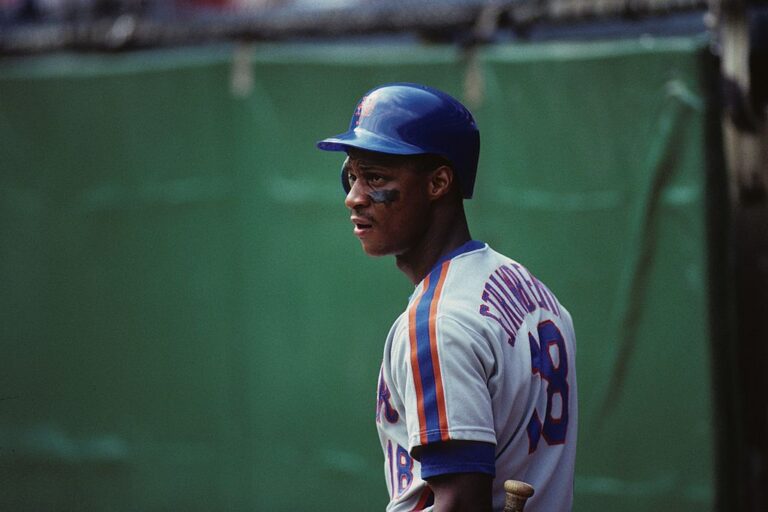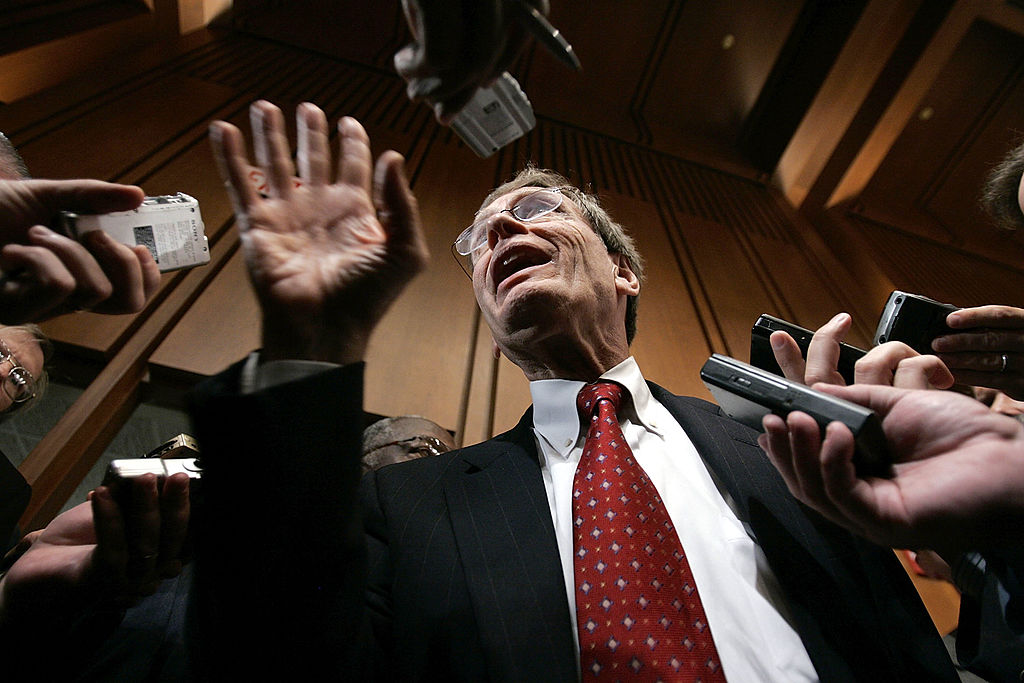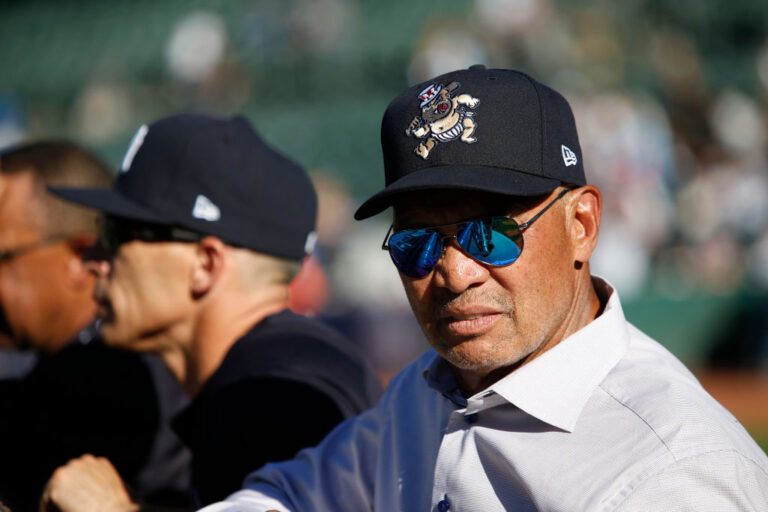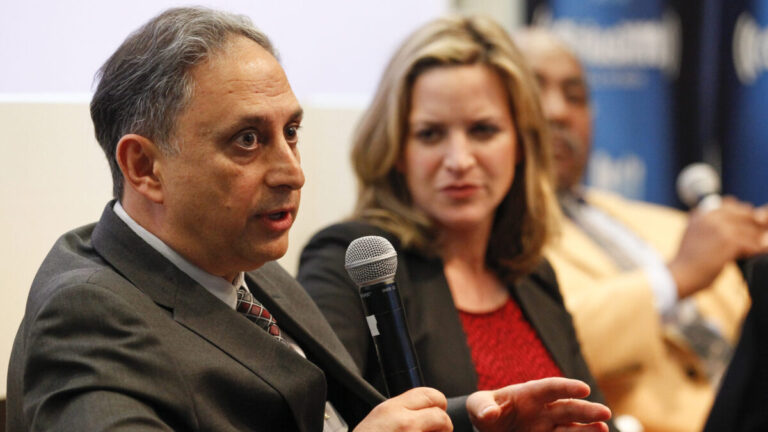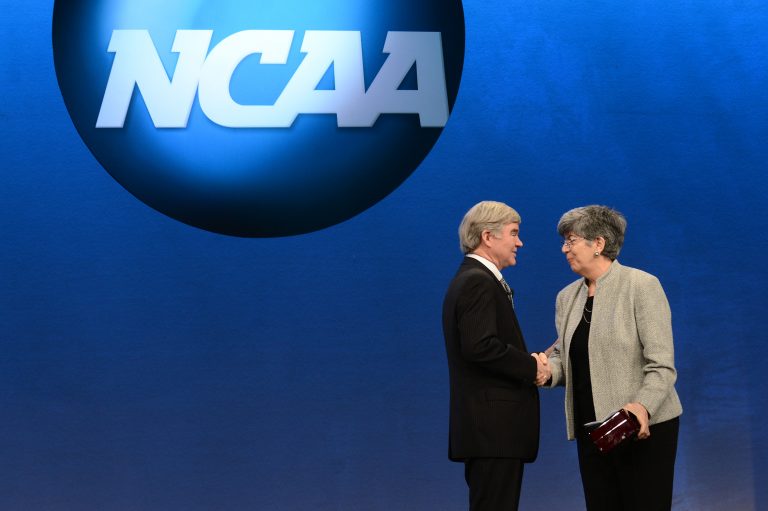Beyond the Selig Rule: Can Baseball Fix Its Pipeline For Managers of Color?
Why this matters
New Global Sport Institute Field Study data show Major League Baseball's longstanding diversity issues among managers has not improved over the past decade, and managers of Color are still more likely to be fired and less likely to be rehired than their White counterparts. In 1999, former commissioner Bud Selig tried to fix the problem with his own "Selig Rule," but the mandate did little to change baseball's tide.
Following a Major League Baseball offseason in which no team managers of Color were hired, then-commissioner Bud Selig recognized that the league had a problem. Baseball lacked diverse leadership, and it was difficult for people of Color to even be considered for those roles. So in April 1999, Selig sent a memo to teams to create what is now referred to as the “Selig Rule.”
A precursor to the National Football League’s much-discussed “Rooney Rule,” Selig’s memo required teams to interview women and racial minority candidates for manager, general manager, assistant general manager, and directors of player development and scouting openings. Teams also were asked to submit lists of all vacancies and people being considered to fill them; if minority candidates were not already being considered, Selig offered to help identify candidates to interview.
At the time, just three MLB teams were managed by men of Color.
“It was the right thing to do,” Selig says today. "I wanted people to be fair in their process, not just to eliminate people because they are Black, Latino, Asian, or anything else. Baseball is a social institution, as many have heard me say, and I wanted us to act like a social institution.
“One of the things I knew was that people were not interviewing minorities as much as they should. And so I wanted to make it not only official but mandatory that they at least interview. And it worked. ... It was just a matter of doing the right thing.”
Twenty-two years later, Selig’s goals remain admirable. But evidence suggests that the rule bearing his name has had minimal effect on the makeup of baseball’s top decision-makers. A new study from Arizona State University’s Global Sport Institute examining MLB manager hiring and firing patterns from 2010 to 2019 has found that while managers of color during that time period had the same or more robust playing and coaching experience as their White peers, the managers of color were hired through a more narrow career pathway and within a smaller age range, had shorter tenures, and enjoyed fewer second chances.
During the time period examined:
- Eight Black managers were dismissed. Only three were hired.
- Thirteen managers with no previous coaching experience were hired. Twelve were White. One was of Color.
- Seven White minor league managers were hired, compared with just two of Color.
- Ten outgoing White managers went on to manage again, while only four outgoing managers of Color did the same.
- Managers of Color had, on average, a higher winning percentage in their final season before being fired than White managers did.
- Seventy-five percent of the outgoing managers of Color were fired rather than leaving of their own accord. By contrast, 57 percent of outgoing White managers departed the same way.
- In 2010, three of five newly hired managers in MLB were White. In 2019, five of six new MLB managers were White.
Baseball’s issues with diversity aren’t limited to in-game leadership. Just under 8 percent of MLB players are Black, down from an all-time high of 18.7 percent in 1981. The league has struggled to place women and people of Color into front-office leadership roles and has lost much of its grassroots connection to Black America.
Still, the sport’s failure to be more inclusive may be felt most acutely among coaches of Color. Since Preston Gomez was hired by the San Diego Padres in 1969, just 35 men of Color have managed an MLB team – ever. And at the end of the 2021 regular season, only two managers – Dave Roberts of the Los Angeles Dodgers and Dusty Baker of the Houston Astros – were Black. Four other managers of Color made up a total of six in MLB.
Today, many coaches of Color feel that they have been systematically excluded from leadership and that they do not have an equal place in the sport. Those interviewed for this article were hesitant to speak on the record, fearing that doing so could ruin their chances of getting or keeping a job.
One former major league player who asked not to be identified summed up the frustrations of many: “Major League Baseball is the last bastion for White dominance in American sport. We don’t just want a seat at the table. We want a voice.”
‘Why Don’t I Get An Opportunity To Be Put In That Situation?’
Gary Jones has been in and around MLB for more than 30 years. Drafted out of the University of Arkansas by the Chicago Cubs in 1982, he spent his playing career in the minor leagues and then became a minor league manager. After winning four minor league Manager of the Year awards and being a part of the Cubs’ coaching staff during their historical 2016 World Series victory, Jones hoped that he would finally receive an opportunity to manage a major league team. He did not. Upon returning to the minors to manage the Philadelphia Phillies’ Triple-A affiliate in 2018, he told The Undefeated that he was still holding out hope – but he also expressed frustration.
“I feel like I’ve paid my dues,” Jones said. “Sometimes, you sit back and see other guys getting opportunities with way less experience, and – I’m not going to lie – sometimes I do shake my head and wonder, ‘Why don’t I get an opportunity to be put in that situation?'”
Three years later, Jones is still in the minors.
Tyrone Brooks, senior director of the Front Office and Field Staff Diversity Pipeline at MLB, has heard similar stories. His staff is working to lower barriers to leadership positions across the league, with a focus on creating a new and more diverse coaching pipeline. In 2019, he says, there were seven bench coaches of Color – but now there are 14, a result of teams expanding their search pools.
Becoming a MLB bench coach, Brooks says, can provide a greater resume and experience boost than managing in the minors. “It used to be that there was more of a true traditional pathway where individuals were managers in the minor leagues for long periods and then got to the big leagues,” he says. “That process has pretty much been changed now, whereas it's more about getting to a big-league staff where you can … learn in an environment where you're using a lot of advanced data and analytics to help with shifting, roster construction, and also lineup construction. Having that exposure has been a big plus for helping individuals because there's so much more that's involved in making a staff now.”
While diversity in MLB front offices remains limited, Brooks says that he and his team are creating change that will pay future dividends. According to MLB, the 2020-2021 front-office hiring cycle saw:
- 80 hires assisted by Brooks’ team, surpassing the previous high of 63 during the 2018-2019 hiring cycle.
36 full-time MLB-assisted hires, surpassing the previous high of 21 during the 2018-2019 hiring cycle. - New hires were 51 percent African-American (11 percent increase), 28 percent Hispanic, 14 percent Caucasian (all women), 8 percent Asian.
- New hires were 21 percent women (17 hires).
For now, the pathway to major league managing jobs for Black candidates is largely limited to starting as a player, becoming a coach, and then getting hired as a manager. Barriers to advancement abound, reflected in the Global Sport Institute study finding that, from 2010 to 2019, 79.4 percent of all newly hired managers were White and just 4.8 percent (or three people) were Black.
One former player told Global Sport Matters that many mid-level Black coaches with years of experience are repeatedly overlooked for promotions while White men with less experience are given opportunities – an observation that dovetails with the study’s finding that while non-White managers typically had years of prior coaching experience, more than a quarter of White managers had no prior MLB coaching experience.
The study also found that nearly 90 percent of all managers during the time period studied had played in MLB. Given the long decline in the number of Black players, it’s increasingly likely that hiring a Black manager will require hiring someone who never played in the league.
“To bring in more Black managers, you have to have owners who are more open to having a non-former big-leaguer manage a team,” said another person with experience across MLB who is considering leaving out of concern about its talent pipeline. “It’s just numbers. The applicant pool is so small in comparison to society that the odds are heavily weighted against Black managers.”
Retaining Black managers is also a problem – and a persistent one. Dr. Adrian Burgos Jr., a historian at the University of Illinois, says that for decades, the challenge for candidates of Color has been twofold: “One to get the first job. And then, two, would you ever get a second job?”
Burgos calls Houston’s Baker, who has managed five different MLB teams, “a unicorn.” “He's been able to be hired multiple times in different places,” Burgos says. “Cito Gaston was only ever hired back by the [Toronto] Blue Jays. [Former New York Mets manager] Willie Randolph was never hired again.”

Baseball’s Black Talent Drain
Baker is the first MLB manager to lead five teams – the Cubs, Astros, San Francisco Giants, Cincinnati Reds, and Washington Nationals – to the playoffs. Somewhat ironically, both his ability to win and to be rehired mask the league’s history of monochromatic management. As Rob Arthur of Baseball Prospectus notes, Baker is responsible for more than one-third of the total MLB seasons managed by Black men; without him, disparities would be even greater.
Last year, MLB participated in celebrating the Negro Leagues’ centennial anniversary. Burgos says that the league’s shrunken Black talent pool has its roots in the decimation of the Negro Leagues and a failure to fully absorb its lessons. “They did not outsource managing baseball teams in the Negro Leagues and Black baseball to White guys,” he says. “They developed their own talent. Major League Baseball and its teams have not regularly looked to develop African-American talent so that post playing career, they can feel, ‘I can be a manager. I can be a general manager.’”
Another reason Black players may not see themselves as future managers is that their experience as players is not appreciated – at least, not in the same way as it is for White players. Black and Latino players often are excluded from positions considered to be closely connected to on-field and team leadership, such as catcher; instead, they tend to be outfielders, a trend that is rooted in racism. In the 1970s and 1980s, there was a golden generation of Black catchers – but today, 70 percent of the Black players in MLB are outfielders. Meanwhile, the Global Sport Institute study found that catcher is among the most common playing positions for future managers.
Longstanding racial biases and stereotypes also play a role. Rather than being seen as intuitive or great communicators, Black players are often characterized by traits like speed and athleticism. This dubious dichotomy pitting intellect against athletic ability has been accelerated by the growing importance of analytics within the game. As data science and advanced statistical analysis have become more important in decision-making both on and off the field, MLB leadership increasingly has come from academia and Wall Street rather than the diamond.
“The assumption is that non-White players, despite their experience in the sport, are just not smart enough to understand it or employ it as a tool,” a former MLB player told Global Sport Matters.
While advances in technology and strategy have helped some teams improve, former players can be left feeling that they are seen by front offices as mere labor – and not as leaders who can balance their lived experience in the game with new information and tactics. This can be especially true for players of Color. In a 2019 interview, former National Basketball Association player Jalen Rose criticized decision-makers in basketball, saying that “there are many people that feel like it has a cultural overtone to it that basically suggests that, even though I may not have played and you did, I am smarter than you, and I know some things that you don’t know, and the numbers support me, not you.”
When the Nationals fired Baker in 2017, it was rumored that he was let go because he failed to embrace analytics. In an interview with Ken Rosenthal of The Athletic, Baker addressed those rumors, calling out what he termed “intellectual discrimination” among MLB teams. “‘Dusty don’t believe in sabermetrics.’ What are you talking about, man?” Baker told Rosenthal. “We were using it before it had a name. You’ve seen me study. What do you think, I was just writing something down?”
After Baker was hired by the Astros, he faced similar questions. “I’d like to think that I can combine the two,” Baker said on Houston radio after being hired. “Plus, forever, since I’ve been in the game and since I’ve been managing, there’s always been something similar to analytics. It just didn’t have a name. Every day, I would write down first-batter efficiency out of the bullpen, left-right matchup, who hits into double plays, who’s prone to strikeouts. So, this isn’t really new.”
'Why Would You Eliminate a Large Percentage of People?'
Though quantitative analysis may not be new within MLB, the “Moneyball” era has seen the emergence of a MLB front office leadership pipeline that runs through Ivy League and other predominantly White universities, which in turn has hurt the perceived hireability of Black candidates who seldom come from the same socio-educational spheres. In most industries, people in positions of power tend to hire people they know, people within their social circles, and people who remind them of themselves – all of which can result in diminished diversity.
In a conversation with Chicago radio host Laurence Holmes last June, then-Cubs president Theo Epstein reflected on the civil unrest overtaking the country in the wake of the murder of George Floyd and how it related to the diversity in the Cubs’ front office:
“You have to look at your own decision-making and examine that and see if perhaps you have your own unconscious biases that exist. As a leader, all leaders, whether they like it or not and whether it’s intentional or not, they shift the culture around them.
“If you look at the Cubs for example, we don’t have a representative number of African-American employees. Especially for a team in a city like Chicago. We might be up to major league averages in those areas, but that’s nowhere near good enough. And that's part of the problem. Now if you look more broadly beyond the Cubs, if you look at Major League Baseball, our numbers aren’t nearly good enough. We have two African-American heads of baseball operation, two African-American managers, the percentage of scouts, the percentage of front-office people, they just all fall short. Not to mention the percentage of African-American players in the game is under 8 percent now. That stuff doesn’t happen by accident. Again, these issues are institutionalized at this point. They’re systemic.
“There have been a lot of key decisions where I end up hiring someone who looks like me or with a similar background as me, and I think that’s a default for a lot of people. A dangerous default because you end up falling back on the comfort of the familiar, and when you do that, you don’t end up with a diverse enough organization. When you do that, you don’t end up with diversity of perspective or experience or opinion as well, and you can’t be quite as effective that way.”
Transforming Epstein’s thoughts into action will not be easy for MLB, as the history of the Selig Rule shows. Even when the league punished teams that broke the rule, a lack of follow-through and transparency made the rule easier to ignore.
“I couldn't tell them whom to hire, because that wasn't right,” Selig remembers. “But I could tell them they must interview, and why wouldn't they? That’s the point I always made. Why would you eliminate a large percentage of people? And instead of having the biggest pot to draw from, you’re self-limiting, and so the rule made a lot of sense. I hope it’s working as well as it should.”
For so many, it has not. That wouldn’t have surprised Frank Robinson. Back in 1999 when Selig sent his memo, MLB’s first Black manager criticized MLB for not creating diversity at the top of the league and staying dedicated to change.
“When the heat’s turned up a little bit, the people at the top who are in position to do something make a lot of promises,” Robinson told Sam Lacy of the Washington Afro-American. “But as soon as time passes and the heat goes down and it’s cool again, it’s business as usual. You look around and not much has been done.”
As MLB has learned, in an institution as big as pro baseball, true equity is bigger than just one leadership position and is not enforceable by one single rule. Change must be deep-seated and cultural. Jim Rooney, whose father, Dan, is the namesake for the NFL’s similar rule, says that finding and hiring diverse people can not only change a team’s demographics but also reshape its culture. “He (Dan) understood culture wasn't static,” Jim Rooney says. “It's believing in someone enough to say, ‘Hey, this person is going to enhance our culture.’”
While the failure of baseball to fix itself gets headlines, what goes all too often untold are the stories of qualified leaders of Color who were cast aside. The names and stories that go viral are the ones famous enough to draw attention, but the real story is the hundreds who weren't even given the opportunity for consideration, victims of the sport’s inequitable culture.
Baseball’s rules have proven to be outdated, thinly constructed, and alienating. MLB did go first, implementing a system designed to diversify and improve a beloved American sport. But so far, it has failed to address the root issues causing people of Color across baseball to lose out on opportunities, leaving the league back where it started in 1999.
Monthly Issue
Rediscovering America's Pastime
For baseball to survive as America’s pastime, the sport known for tradition and nostalgia will need to broaden its appeal across racial, cultural, and gender lines.
For the kid who swings a bat for the first time; the front office data analyst looking for the next big star; the minor leaguer hoping to make it to the bigs; and the major league manager looking to stay on top, can a centuries-old sport become more diverse and inclusive in new ways?
Related
